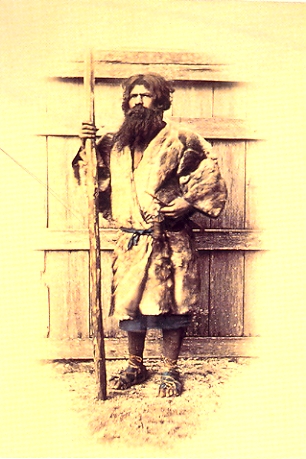
December 6, 2008
Loren is on the road, traveling in California. Today’s guest blogger is Brent Swancer.

The Mysterious Ainu
by Brent Swancer
December 6, 2008.

The Ainu are the indigenous people of Japan, inhabiting the Northern island of Hokkaido as well as the Kuril Islands and Sakhalin. Their name means “human”, or more accurately the opposite of the gods that inhabit all plants, objects, and animals in their heavily animistic religion.
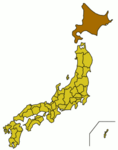

Thought to once inhabit all of Japan, the Ainu were pushed northward by the influx of immigration from Asia that occurred primarily during the Yayoi period of Japanese history around 2,300 years ago.
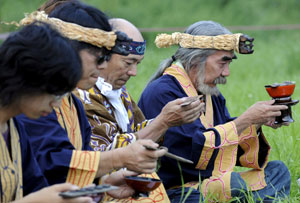
The Ainu have faced a long history of oppression and hardship. Throughout the modern era, they have faced active assimilation, forced labor, and the repression of their cultural identity and customs. During the height of the Japanese government’s assimilation policy in the 1800s, the Ainu were banned from observing daily customs and were labelled as “former aboriginal people,” and it was not until 1997 that they were even recognized as an indigenous minority group at all.
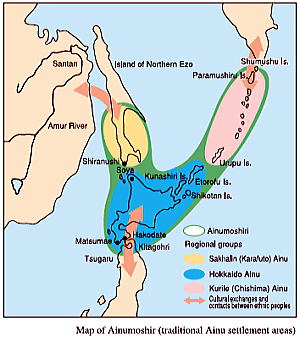
It is estimated that there are around 20,000 to 60,000 people (many of mixed race) who identify themselves as Ainu today, although the accuracy of these numbers is questionable due to the fact that for a long time Japanese census records made no distinction between Ainu and ethnic Japanese, as well as the tendency for many to hide their ancestry due to rampant discrimination in some areas. There could be as many as ten times more than that according to some.

Shown is an Ainu woman with a traditional lips tattoo. Almost all woman had these tattoos done upon reaching adulthood, which was 15 or 16 by Ainu standards. The tattoos are believed to increase beauty and gain better prospects for marriage, as well as being a sort of rite of passage into womanhood.
Besides the political controversy of the plight of the Ainu people, they have also raised other debates within anthropology and hominology. One such debate is that of the very origins and history of this people. Ainu are very different in physical appearance than ethnic Japanese and other Asian peoples. Taller than average Japanese, the Ainu typically have a long skull, light complexion, heavy facial hair, and Caucasian features. Their hair tends to be thick and wavy, and body hair is also more pronounced. Aside from the physical differences, the Ainu language is also quite unique, showing no relation to Japanese or other Asian languages. These unique differences have posed an often debated mystery. Who are the Ainu and where did they come from?


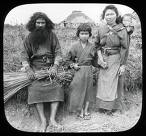
Early anthropologists were fascinated by the Ainu and made much of the physical differences that existed between Ainu and Japanese. These early researchers often exaggerated these physical qualities, and suggested that they were evidence of Caucasian ancestry. The Ainu were said to be a sort of “lost Caucasian race”. However, there is no genetic evidence of this and it is considered an outdated theory. The mystery remained however, since it was obvious that the Ainu people and ethnic Japanese were of different origins.
There are many current ideas on the origins of the Ainu people. Some suggest that the same prehistoric group of people that produced the Australian aborigines, a sort of “Oceania race,” also inhabited the Japanese archipelago before the Jomon period of Japan (14,000 to 2,500 years ago). This is based on fossils dating back 10,000 years that seem to show similarities with the indigenous people of Australia and New Zealand.
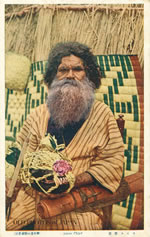



Others say that the Ainu are descendants of people of mongoloid stock from Northeast and central Asia, who migrated to Japan before the Jomon period. Genetic evidence seems to support this theory, since DNA tests on Ainu showed that many showed a relationship to the people of Tibet and the Adaman Islands of the Indian Ocean, and one in eight Ainu men were shown to exhibit genetic traits most common to the Russian far east and Mongolia.

There are other ideas too, such as that the Ainu represent a completely unique group of people, or an ancient Asian race, but the question of the exact origins of the Ainu remains unresolved.
The mystery of the Ainu does not end with their origins, however. One hotly debated topic that only adds to the mystery of Ainu history is the notion that they may have even been among the first peoples to inhabit North America. The epicenter of the debate swirling around this theory, and the best evidence for it, is a curious piece of fossil evidence called the Kennewick Man.
+++
Read part II on this contribution on Monday, “The Ainu and The Kennewick Man” by Brent Swancer, December 8, 2008.

Brent is shown with his beautiful family – wife Chie and his daughter Jasmine – along with an unidentified cryptid spotted at the 25th celebration of the Japanese version of Disneyland. Unaware of the behavioral characteristics of this cryptid, Brent is very protective of his daughter, who, being a good cryptozooologist-in-training, has grown cryptic ears to blend into her surroundings. (Caption by Loren Coleman.)
About Loren Coleman
Loren Coleman is one of the world’s leading cryptozoologists, some say “the” leading living cryptozoologist. Certainly, he is acknowledged as the current living American researcher and writer who has most popularized cryptozoology in the late 20th and early 21st centuries.
Starting his fieldwork and investigations in 1960, after traveling and trekking extensively in pursuit of cryptozoological mysteries, Coleman began writing to share his experiences in 1969. An honorary member of Ivan T. Sanderson’s Society for the Investigation of the Unexplained in the 1970s, Coleman has been bestowed with similar honorary memberships of the North Idaho College Cryptozoology Club in 1983, and in subsequent years, that of the British Columbia Scientific Cryptozoology Club, CryptoSafari International, and other international organizations. He was also a Life Member and Benefactor of the International Society of Cryptozoology (now-defunct).
Loren Coleman’s daily blog, as a member of the Cryptomundo Team, served as an ongoing avenue of communication for the ever-growing body of cryptozoo news from 2005 through 2013. He returned as an infrequent contributor beginning Halloween week of 2015.
Coleman is the founder in 2003, and current director of the International Cryptozoology Museum in Portland, Maine.
Filed under Cryptomundo Exclusive, Cryptotourism, CryptoZoo News, Cryptozoologists, Cryptozoology, Folklore, Guest Blog, Photos